Northwest culture train
The Northwest is not only well-known for its majestic, rugged, poetic beauty with vast forests and terraced fields, but also a treasure trove of folk culture that has been formed, preserved and developed for thousands of years.
The story of Northwest culture
The natural and simple life of the local people clearly reflects Northwest folk culture but still has its distinct characteristics . It can be easily seen through a rustic everyday dish, through a tray woven from bamboo ribs, through the people's backpacks and slings. Even it is simply expressed through the Then singing from the daily songs of Tay girls or through a motif on brocade patterns, through their own voices...
The outstanding folk art of the ethnic groups in Sa Pa is the art of decorating costumes. Because Sa Pa has a tropical climate, cold and long winters, the costumes of the local people also have their own unique characteristics. The Dao and Xa Pho people prefer clothing with eye-catching warm colors. The thick embroidered bands are made of red, combined with yellow and white, standing out on an indigo background, creating a brilliant beauty. The Mong people's everyday clothing is mainly dark indigo.
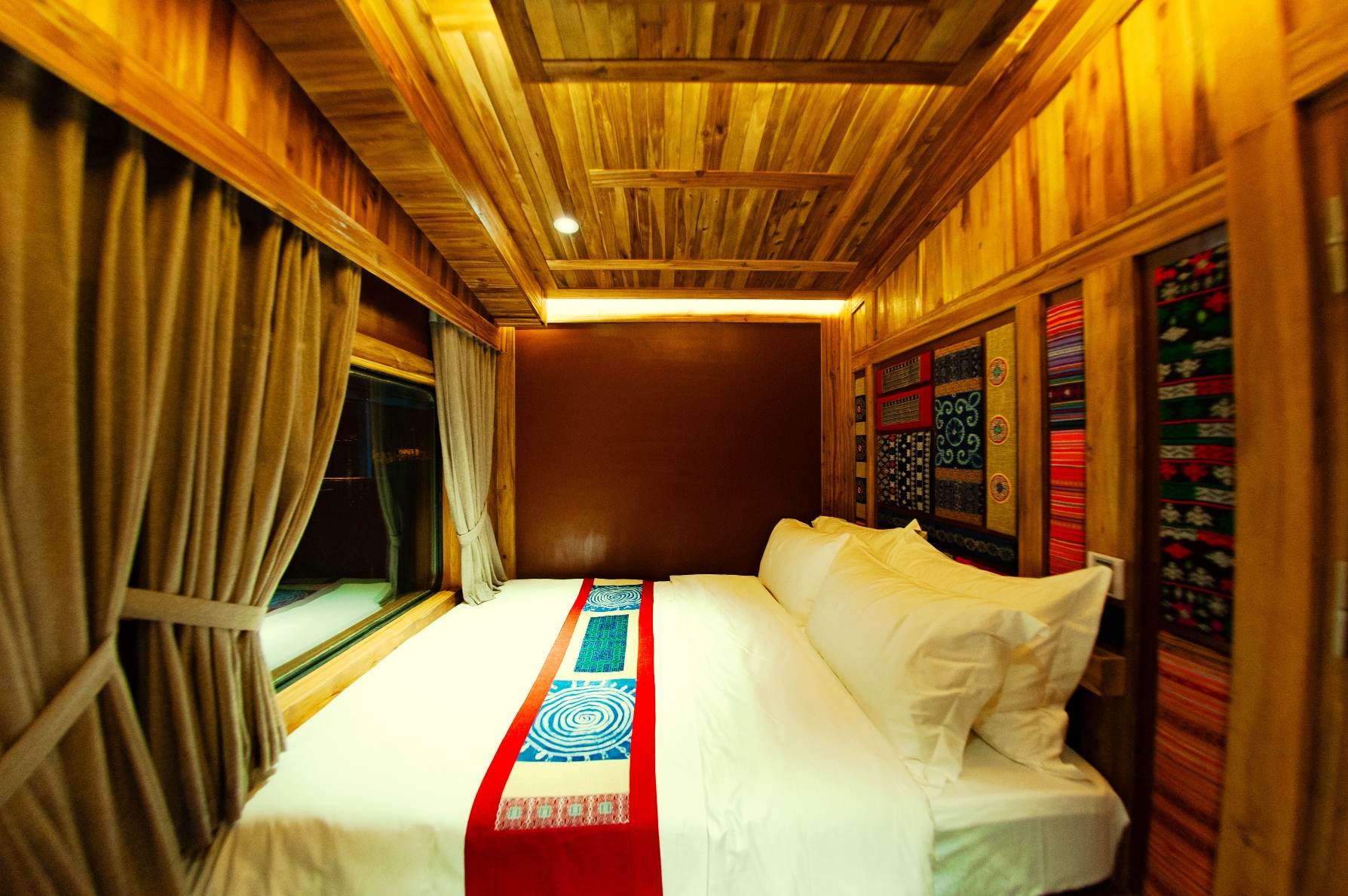
The Grand Suite Queen Cabin in Chapa Express Train
The process of making brocade of the H'Mong people
Weaving from flax
Harvest and dry flax are the first processes that Mong women have to do to create brocade. Big bundles of flax are dried right in the yard or any large area of land.
When the flax is dry enough it has been dried in the sun for 3-4 days and dried in the dew for 2 nights), it will be brought home and the bark removed. The steps which require meticulousness and arduousness of Mong women are pounding flax and connecting the fibers . The flax is poured by careful hands of Mong women until it is soft for 4-5 days, then meticulously connecting the flax fibers so that they are even and beautiful. Connecting the flax evenly and beautifully is the joints not exposed, the fibers being even so that when the fabric is made, the fibers are even, and the woven fabric is flat and smooth.
The nimble hands of Mong women connect the fibers and roll the flax fibers into small bundles in their hands. When they travel to the fields, to the market or anywhere, they will unit and roll the flax fibers whenever their hands are free
After spinning and joining the fibers by hand, the flax is put on the spinning wheel one more time before being collected on the spinning wheel. These spools of fiber are dipped in water for about 15 - 20 minutes before spinning to soften and increase elasticity to avoid breaking, t . After a few more preliminary processing steps such as boiling, incubating, washing, the flax fibers will be white, smooth and tough. After that people will roll the fibers one more time to make them thinner, flatter and then arrange them into threads for weaving. The Mong people usually weave fabrics about 40 - 45 cm wide.
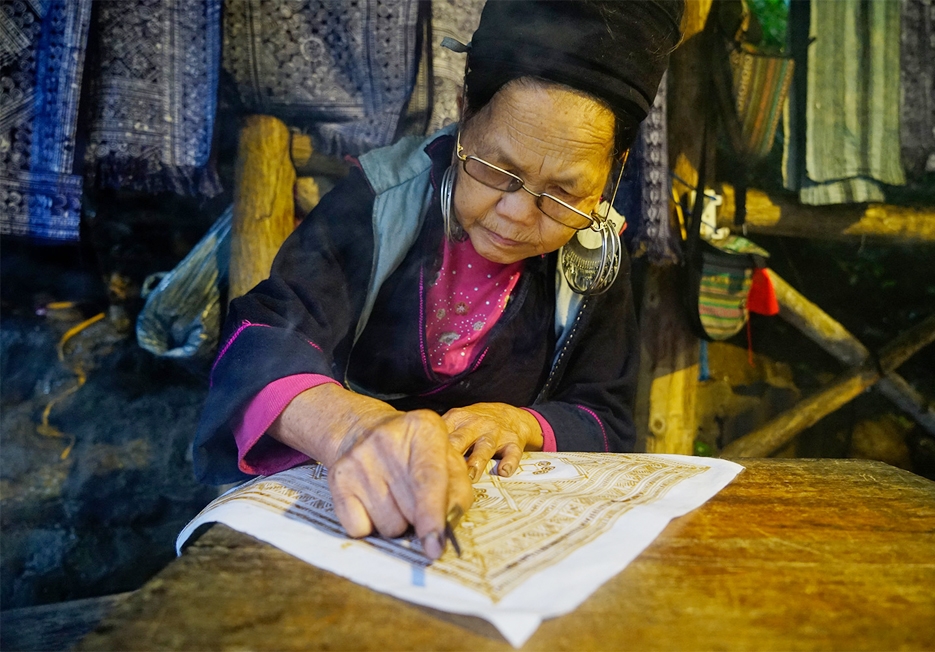
Photo: Dantoc&Phattrien
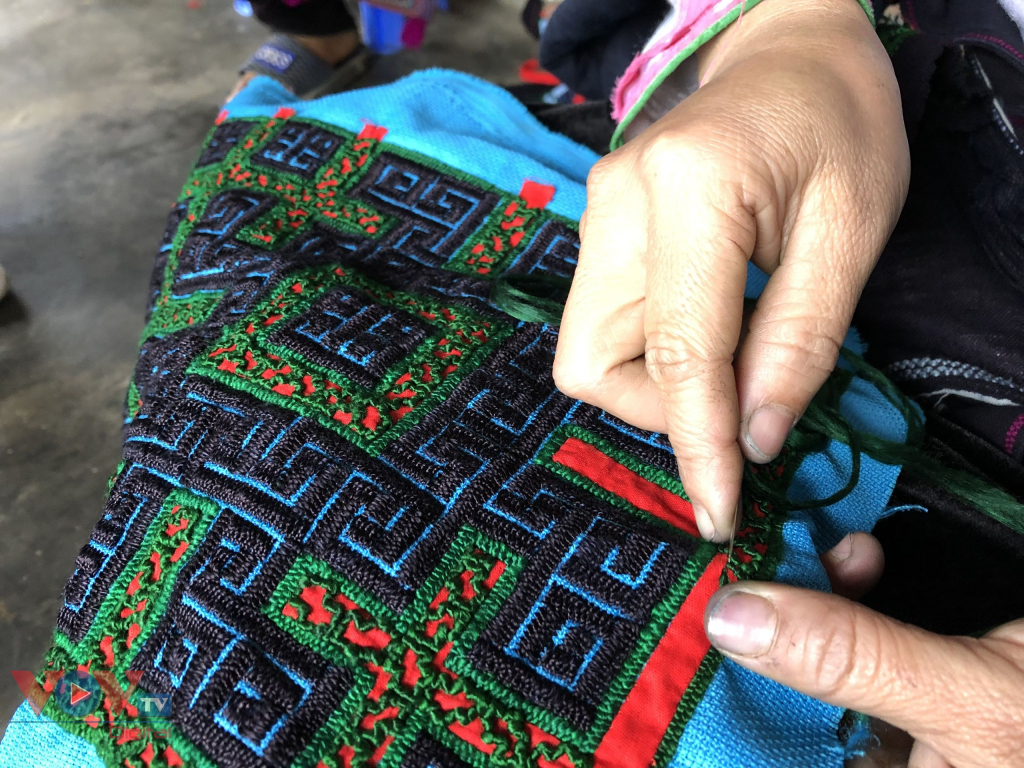
Photo: VOV
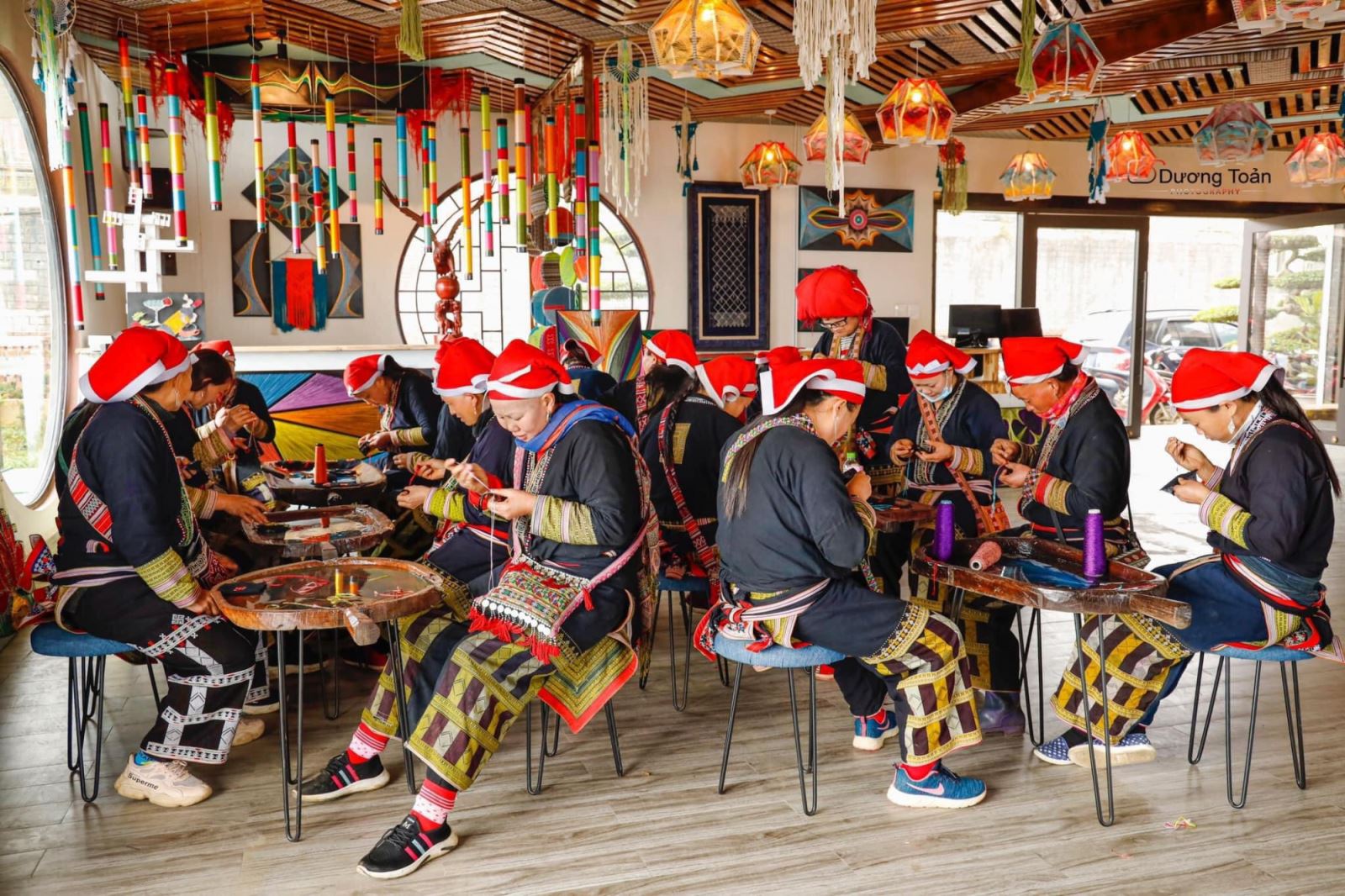
Photo: Kinhtenongthon
Draw patterns with beeswax
Local people create patterns with beeswax directly onto the flax scent. They use a bowl of beeswax mixed with the candle in the pot so that the wax is always pure. The pen used to draw bees is a wooden-handled pen, the pen tip is made from 3 pieces of copper put together. Woman uses a wax pen ready to draw directly on linen.
Especially,the way of creating patterns requires precision, high concentration as well as creativity and aesthetics of the artist. Once beeswax has been drawn on the fabric, the text cannot be changed. Only when waxing will the wax peel off to display the drawn text image.
Indigo dyeing
The fabric is soaked in water to absorb before dipped in indigo. Dipping in indigo is an indispensable step in creating Mong products. After dyeing indigo, the fabric will be dried, washed to remove wax, and continued to be washed many times before being rolled to create flatness and smoothness. The finished linen fabric will be brought to the market to sell or sewn into shirts and skirts. Each piece of fabric contains the sweat and effort of Mong women. The final result of the tireless labor is the skirts and shirts that not only keep you warm but also have their own characteristics, highlighting the beauty of the Mong people.
Embroidering patterns
During free time,Mong women usually embroider colored threads on linen to create patterns. After the linen is woven and dyed indigo, Mong women will embroider patterns on each piece of fabric. Their hand-embroidered patterns are mainly squares, circles, and spirals. Each person creates their own pattern. Therefore, the patterns of the H'Mong people are rich in shape and unique. The embroidery technique of the H'Mong people is mostly embroidered in the cross-stitch style of the letter "x" or in the interwoven embroidery of colors to create patterns such as decorative fringes on the sleeves, necks or waists of shirts. This embroidery method shows the initiative, creativity and unusual dexterity of the H'Mong people. This embroidery method has not limited the creativity of the H'Mong people on fabric nor the flow of patterns in the pattern treasure of this ethnic group.
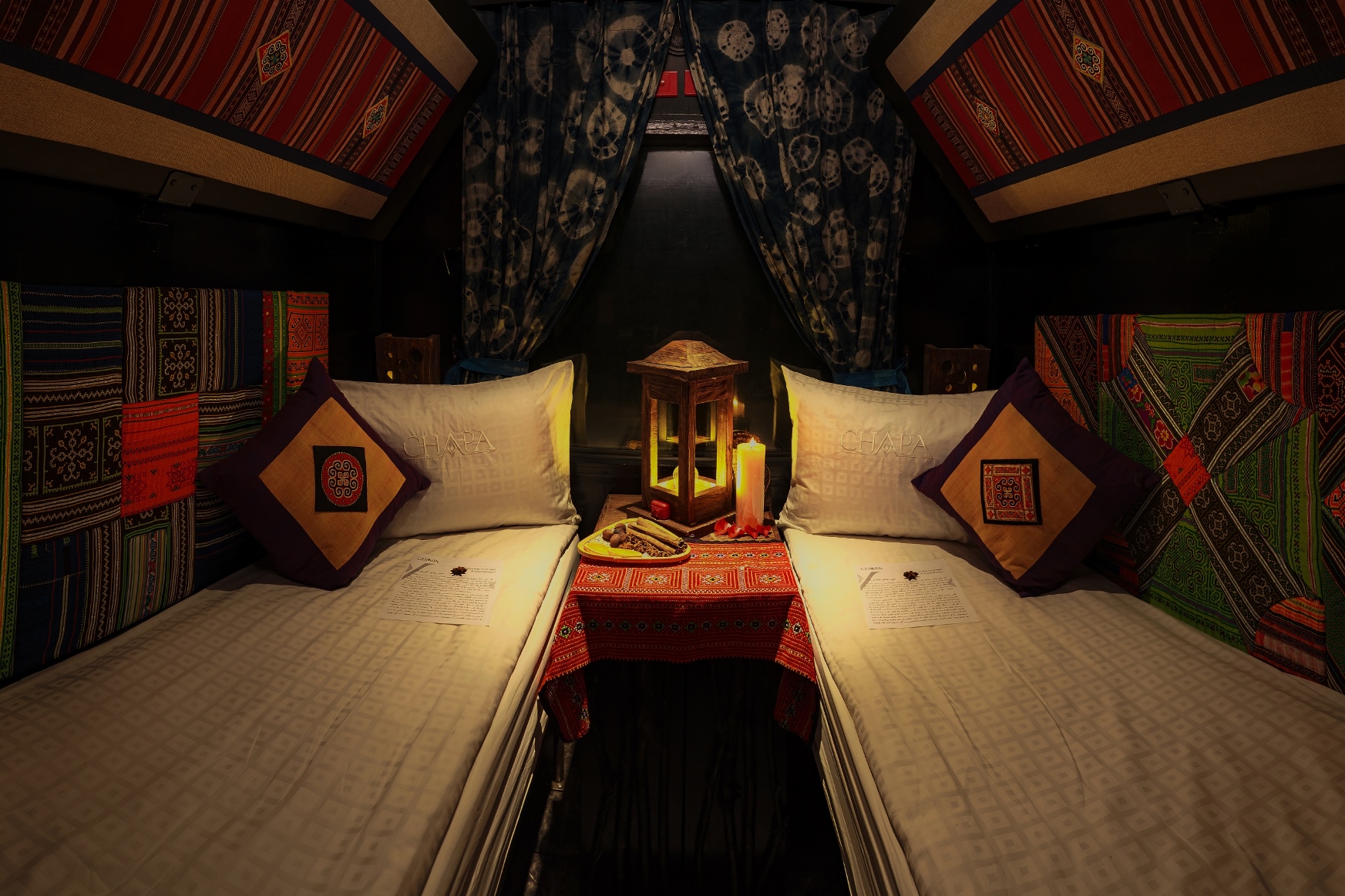
The CHAPA VIP Cabin
Brocade making process of the Dzao people
Pattern colors
Eed, blue, yellow, white, indigo (black) are the basic colors appearing on the costume of Dao women .
Red is the dominant color and occupies the largest area on the costume. Because red means bringing happiness, prosperity, joy, and luck to people.
White is cleverly combined with red in the motifs of upside-down triangles or horizontal, vertical or horizontal, vertical. This combination has made white in any position play the role of helping other colors shine brighter.
Yellow symbolizes 福 “|happiness".
Blue represents 禄 "fortune". Indigo is the background color, playing a decisive role in the success of the art of decorating traditional costumes of the Red Dao people.
Indigo helps the five main colors not to be dazzling but to become fresh, sparkling and lively.
Embroidery techniques
Thread embroidery is the technique of threading the thread through the eye blunt needles, embroidering on the wrong side but the patterns are prominent on the right side.
Knotting embroidery is the technique of embroidering one stitch at a time, each stitch is a thread knot, this embroidery method is used to create raised lines on the fabric background horizontally and vertically, separating the pattern blocks.
Punching embroidery is the method of embroidering or overlaying a part of the embroidered pattern to highlight or supplement. Punching embroidery stitches often hide most of the thread into the embroidery background, creating hidden details, emphasizing some details and increasing the light and dark, near and far.
The Red Dao people do not need a frame but hold the piece of fabric in their hands to embroider. When embroidering, they do not embroider the threads over the fabric threads but embroider the thread into the gaps of the threads on the wrong side of the fabric, the patterns will appear on the right side. Therefore, embroiderers can embroider anytime, anywhere, such as during breaks in the fields or during free time at home.
When embroidering patterns, Red Dao women rely on their vivid imagination to create and their memory which is developed through the process of being passed on experience from their grandmothers, mothers, and sisters since they were 9 or 10 years old instead of embroidering on pre-made patterns but.
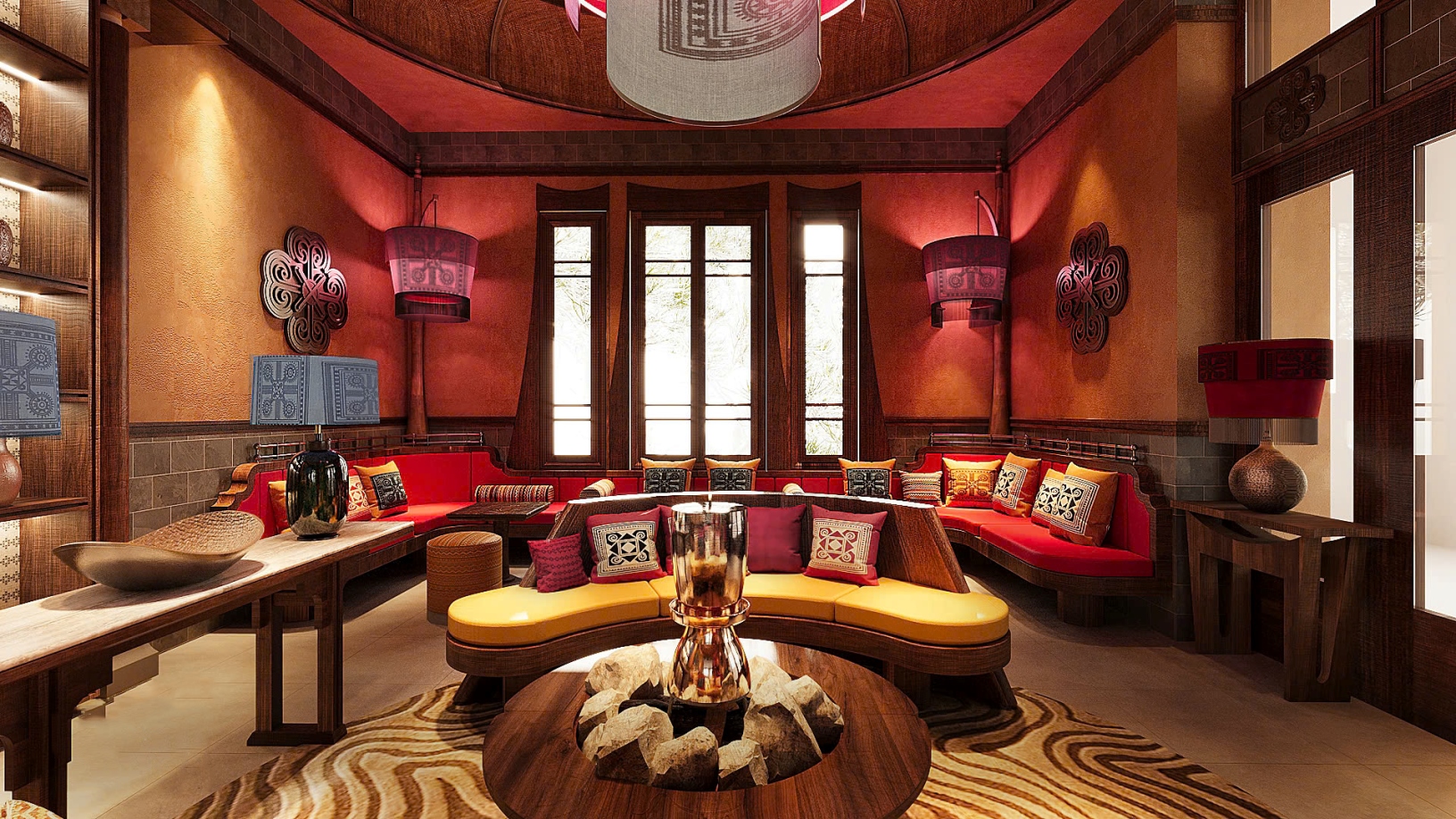
The Chapa Lounge in Hanoi Station
Synthetic
Related Articles
Do you want to book another itinerary, start now!
New booking


